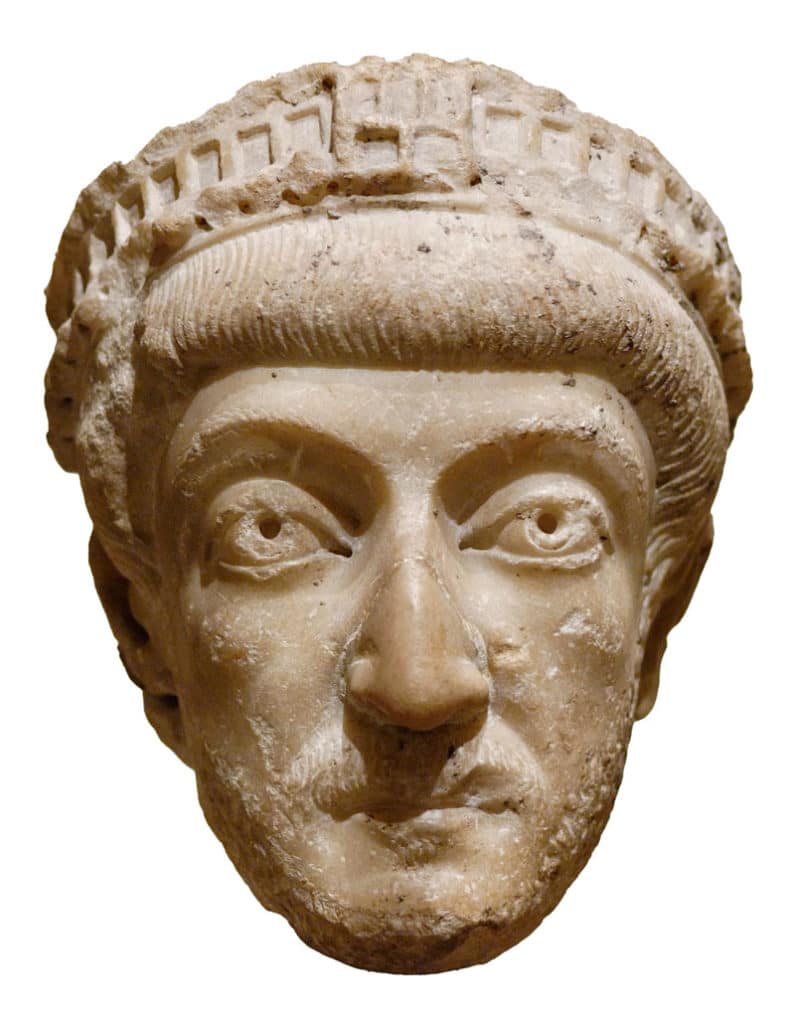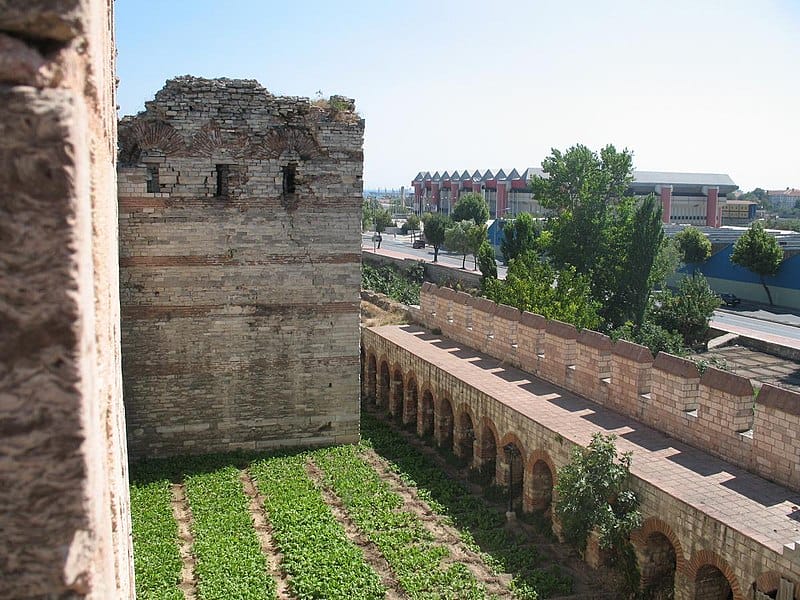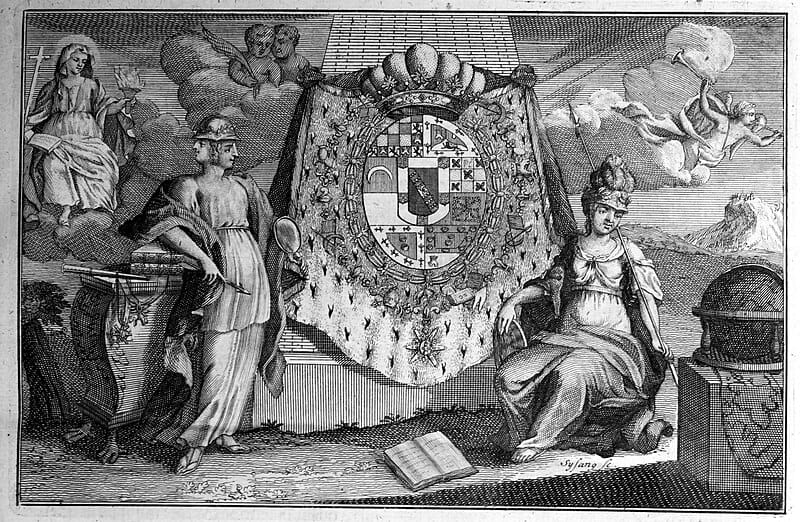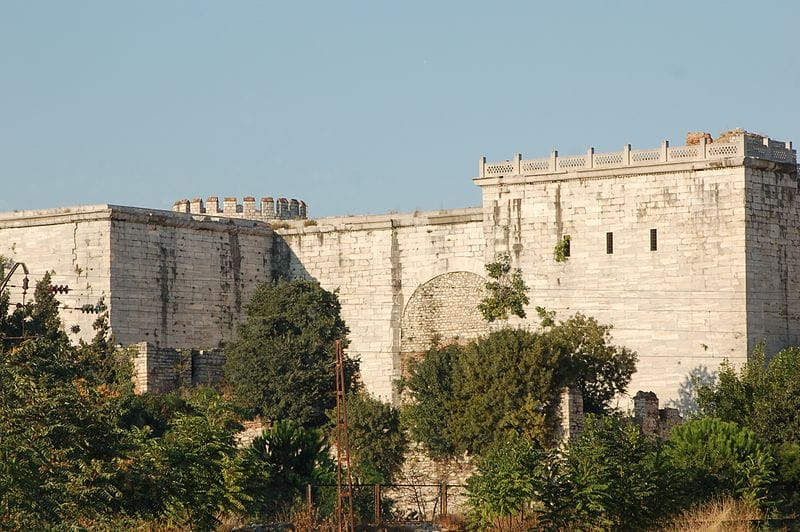Life: AD 408 – 450

- Name: Flavius Theodosius
- Born AD 401.
- Became emperor in January AD 408.
- Wife: Aelia Eudocia; (one daughter; Licinia Eudoxia)
- Died at Constantinople, AD 450.
Early Life
Theodosius II was born in AD 401, the son of Arcadius and Aelia Eudoxia. Already in January AD 402, he was proclaimed co-Augustus by his father.
When in AD 408, Arcadius died, his son succeeded to the throne without any violence. With Theodosius II still an infant, the regency of Constantinople fell to the praetorian prefect Anthemius.
The very rule of Theodosius II and Anthemius began with a crisis. A serious grain shortage led to riots in the streets of Constantinople. But Anthemius soon got the situation under control again, and now, after the death of Stilicho, has even established good relations with the Western Empire.
A new treaty confirmed peace with the Persians, and the cities along the Danube and the Balkans were granted aid to help them recover from the devastation by the Goths. An invasion by the Huns, led by King Uldin, was repelled in Moesia.
The Great Wall of Theodosius
After seeing Rome sacked by Alaric, Anthemius took to extensively fortifying Constantinople. In AD 413, he started building the great ‘Wall of Theodosius,’ which protected a city that had long outgrown the original Wall of Constantine.
The Great Wall of Theodosius, also known as the Theodosian Wall, was a significant fortification system built to protect the city of Constantinople. Construction on these walls began around AD 413 and continued over several decades, with subsequent emperors contributing to their expansion and reinforcement.
The Theodosian Walls were a response to the increasing threats posed by various barbarian tribes, particularly the Huns, who were pressing against the Roman Empire’s borders. These walls were a critical defense mechanism for Constantinople, as the city held immense strategic and economic importance as the capital of the Eastern Roman Empire.
The construction of the walls was a massive undertaking, as it involved skilled engineers, laborers, and resources. The walls stretched approximately 6.5 kilometers from the Sea of Marmara to the Golden Horn, enclosing the entire peninsula on which Constantinople was situated. The fortifications consisted of a series of walls, towers, and moats designed to repel attacks from both land and sea.
The outer wall, known as the Theodosian Wall proper, was constructed of large blocks of stone and featured numerous towers and bastions along its length. Behind this outer wall was a wide moat, adding an additional layer of defense. Beyond the moat lay an inner wall, providing a secondary line of defense for the city.

The walls were strengthened further with the addition of various defensive features, including gates, battlements, and other fortifications. The gates were heavily fortified and served as the primary points of entry and exit for the city. Additionally, the walls were equipped with artillery and other defensive measures to repel potential invaders.
The construction of the Theodosian Walls helped secure Constantinople against numerous sieges and attacks throughout its history, including assaults by the Huns, Avars, and various other invaders. The walls stood as a testament to the engineering prowess of the Byzantine Empire and played a crucial role in preserving the security and stability of Constantinople for centuries to come.
Augusta Aelia Pulcheria
In AD 414, Anthemius handed over the regency to Theodosius II’s sister, Aelia Pulcheria, who was only fifteen at the time but was proclaimed Augusta. Pulcheria was a devout Christian, so much so that many saw her demands of chastity and asceticism as attempts to turn the court of Constantinople into a nunnery. In AD 416, Theodosius II, at fifteen years of age, was declared ruler of Constantinople in his own right. However, Pulcheria continued to administer his government on his behalf for his entire reign.
The most notable event of the following years was the decision by the government of the Eastern Empire to establish Theodosius II’s cousin Valentinian III as the Western emperor in AD 425. Theodosius II even traveled toward Italy to crown his cousin himself but fell ill on the way, having to let Helion, his chief minister, crown Valentinian III on his behalf.
Publishing of the Theodosian Code
The most outstanding feature of the reign of Theodosius II arrived in AD 438 when the Theodosian Code was published. It was a compilation of imperial edicts stretching back over a century, made up of sixteen books. It had been compiled over eight years and had been agreed with Valentinian III.

The Theodosian Code was a comprehensive compilation of Roman law. It represented a significant effort to organize and systematize the vast body of Roman laws that had been accumulated over centuries. The code played a crucial role in shaping the legal framework of the late Roman Empire and served as a foundation for later Byzantine and Western European legal systems.
Huns Invasion
In the later years of Theodosius II’s reign, the Danubian provinces suffered enormously under invasions by the Huns. Constantinople itself was more and more believed in danger by the barbarians. Particularly when, in AD 447/48, earthquakes destroyed large parts of the city wall and coastal defenses.
The wall was repaired within a frenzied effort during only two months. And, thereafter, a new wall with ninety-two towers was added between the repaired wall and the moat, thereby creating the famous triple defense, which should repel successive invaders for another millennium.
For a brief period, Pulcheria, who earlier had forced the emperor’s wife Aelia Eudocia into exile to preserve her power, was eclipsed during the AD 440s by the eunuch Chrysaphius Zstommas. But his influence soon waned, leaving Pulcheria to return to the very head of Theodosius II’s government.
The Death and Legacy of Emperor Theodosius II
Then, in the year AD 450, Theodosius II, while riding near the river Lycus, was thrown from his horse. He suffered a severe injury to his spine and died.

Theodosius II had been Augustus for forty-nine years and had been the sole ruler of the eastern empire for forty-two years. It had been the longest reign in Roman history. And yet, in all these years, he left the governing of his empire to others.
People Also Ask:
What was Theodosius II known for?
His reign was marked by the promulgation of the Theodosian law code and the construction of the Theodosian Walls of Constantinople. He also presided over the outbreak of two great Christological controversies, Nestorianism and Eutychianism.
Who was emperor after Theodosius II?
After Theodosius’ death in 450, Aspar and Theodosius’ sister, Pulcheria, had Marcian appointed emperor (August 25). As part of this arrangement, Marcian was made the nominal husband of Pulcheria in order to formally perpetuate the Theodosian dynasty.
Why was Theodosius II important?
Scholarship has generally considered the reign of Theodosius II as a period of significant weakening of imperial authority and also as a period of little importance, apart from the introduction of the Theodosian Code, some religious controversies, and important church councils.
What did Theodosius II build?
The Theodosian Walls are the fortifications of Constantinople, the capital of the Byzantine Empire, which were first built during the reign of Theodosius II (408-450 CE).
Why was the Theodosian Code important?
Emperor Theodosius II’s legal code governing the Byzantine Empire established Christianity as the official religion and circumscribed the rights of Jews. Emperor Theodosius II’s legal code governing the Byzantine Empire established Christianity as the official religion and circumscribed the rights of Jews.

Historian Franco Cavazzi dedicated hundreds of hours of his life to creating this website, roman-empire.net as a trove of educational material on this fascinating period of history. His work has been cited in a number of textbooks on the Roman Empire and mentioned on numerous publications such as the New York Times, PBS, The Guardian, and many more.
